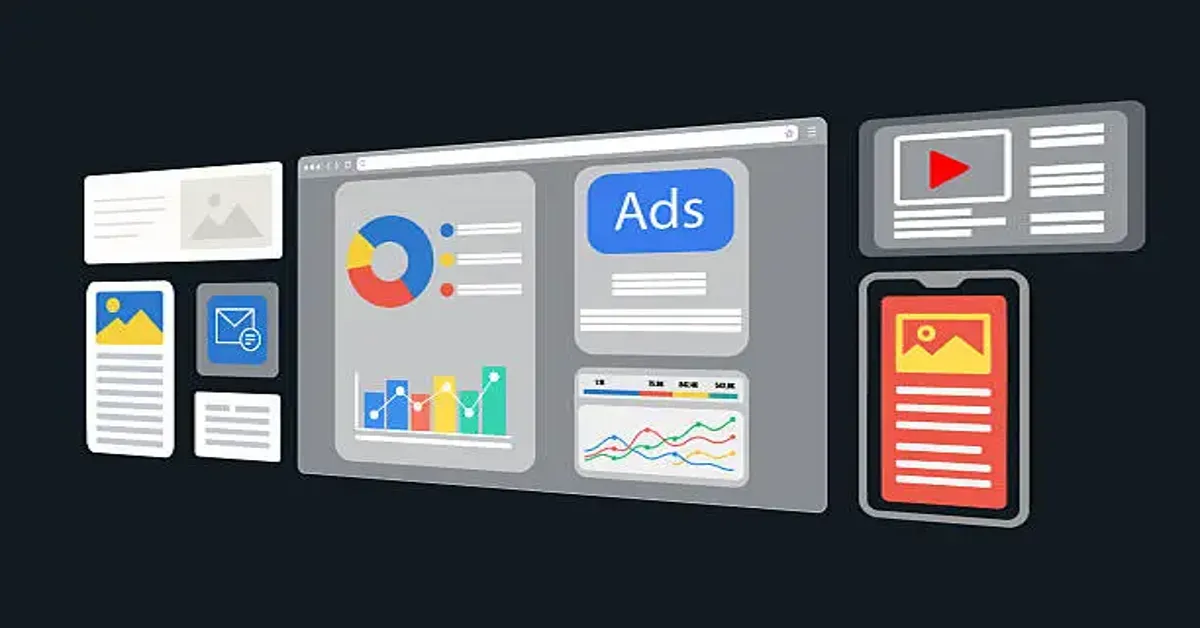Google ad services offer businesses the ability to reach potential customers through targeted online advertising across platforms like Search, Display, and YouTube. These services allow precise control over budgets, audiences, and ad formats, enabling advertisers to increase traffic, generate leads, or boost sales effectively. Google Ads provides a flexible, data-driven way to promote products or services, with no minimum spending required and the ability to adjust campaigns at any time.
By using features such as AI-powered campaign optimization and local service ads, businesses can improve their return on investment and appear prominently in relevant search results. This makes it easier for companies to engage potential customers exactly when they are looking for related products or services.
Advertisers benefit from tools that simplify setting goals, choosing budgets, and targeting specific demographics, ensuring ads reach the most relevant viewers. These services support both small local businesses and larger enterprises aiming to grow their online presence efficiently.
Overview of Google Ad Services
Google Ad Services enable businesses to create and display targeted advertisements across Google’s vast platforms. These services offer tools for managing ad campaigns, selecting audiences, and optimizing budgets efficiently.
They provide a variety of formats and automated features to enhance visibility and reach potential customers at different stages of their buying journey.
What Are Google Ad Services?
Google Ad Services is an online advertising platform that allows businesses to promote products, services, and brands on Google Search, YouTube, mobile apps, and partner websites. Advertisers bid for placement, aiming to reach users actively searching or browsing relevant content.
The platform leverages machine learning to optimize ad combinations based on goals, audience behavior, and budget constraints. This automation helps display the most effective message to potential customers while maximizing return on investment (ROI).
Google Ad Services include campaign management tools, asset uploads (texts, images, videos), audience targeting, and performance tracking. It supports multiple campaign types tailored for different objectives like lead generation, sales, or brand awareness.
Core Features and Offerings
Google Ad Services provide a range of ad formats, including text ads, display banners, video ads, and shopping ads. These formats can appear across Google Search results, the Display Network, YouTube, and partner apps or sites.
Key features include:
- Automated bidding: Uses AI to set bids to meet specific goals, such as maximizing clicks or conversions.
- Audience targeting: Options like demographics, interests, and remarketing lists help reach relevant users.
- Ad asset combinations: Uploading multiple assets allows Google’s system to test and find the best-performing ad variations.
- Performance tracking: Real-time metrics and reports help advertisers monitor campaign effectiveness and adjust strategies.
These tools create flexible campaigns tailored to business goals, whether small local promotions or large-scale global advertising.
Benefits for Businesses
Google Ad Services offer measurable and scalable solutions for businesses of all sizes. Through precise targeting, advertisers can control who sees their ads, improving relevance and reducing wasted spend.
The platform’s automation simplifies campaign management by automating bidding and ad placement decisions, which can save time and improve efficiency.
Businesses benefit from detailed analytics, allowing them to track conversions, user interactions, and ROI in real time. This data helps refine future campaigns for better results.
Additionally, Google’s broad reach across search, video, and display networks increases brand exposure and can drive sales or leads at various stages of the customer journey.
How to Effectively Use Google Ad Services
Effective use of Google Ad Services requires precise setup, strategic audience targeting, and continuous performance tracking. Each step is essential to maximize return on investment while reaching the most relevant customers.
Campaign Creation Steps
The process begins with selecting the campaign objective, such as driving website traffic, increasing sales, or promoting brand awareness. Afterward, the user must choose the campaign type: Search, Display, Shopping, or Video ads.
Next is setting the budget and bid strategy, important for controlling costs and maximizing ad visibility. Budget can be daily or total, while bid strategies include options like cost-per-click (CPC) or target return on ad spend (ROAS).
Creatives should be clear and relevant to the campaign’s goal. Headlines, descriptions, and call-to-actions must align with the intended message. Leveraging Google’s ad extensions, like sitelinks or call buttons, can enhance visibility and engagement.
Targeting and Audience Segmentation
Targeting begins by selecting geographic locations, languages, and devices to reach the desired market. This ensures ads display only where the potential customers are most likely to convert.
Audience segmentation is vital. Google Ads allows users to target based on interests, behaviors, and demographics such as age or income. Remarketing helps reconnect with previous website visitors, improving conversion chances.
Keyword selection plays a critical role in search campaigns. Using a mix of broad, phrase, and exact match types helps balance reach and relevance. Negative keywords prevent ads from showing on irrelevant searches, optimizing spend efficiency.
Performance Measurement and Optimization
Regular monitoring of key metrics like click-through rate (CTR), conversion rate, and cost per conversion is essential. These indicators show if the campaign meets the set goals or requires adjustments.
A/B testing different ad copies, images, and landing pages identifies the best-performing combinations. Optimization also involves bid adjustments based on device, location, or time of day to improve results.
Utilizing Google’s automated recommendations can help enhance campaign performance, but these should be reviewed to ensure alignment with business goals. Consistent analysis and fine-tuning keep campaigns efficient and profitable.

